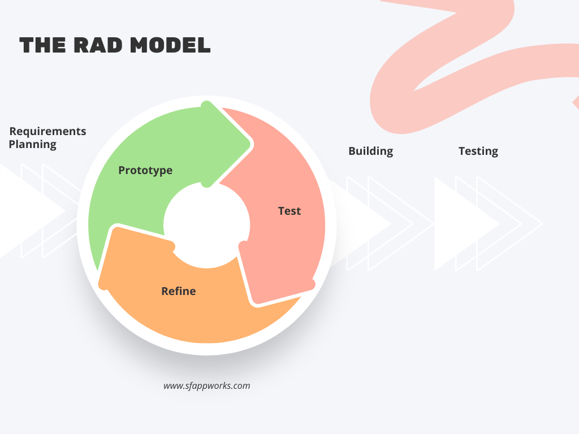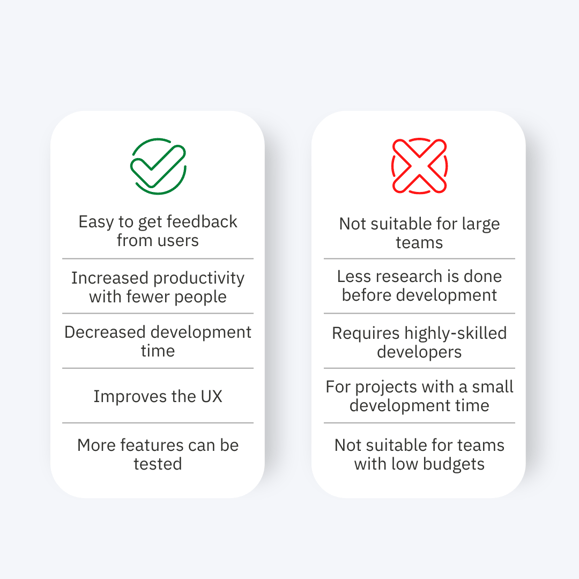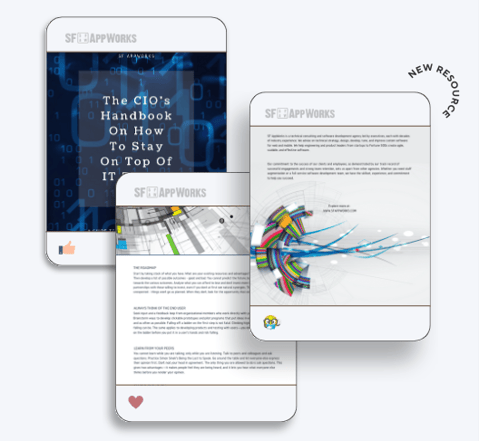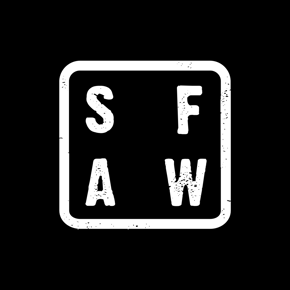Rapid application development (the RAD model) allows software engineers to make multiple iterations and updates to a software in a faster manner, without starting from scratch each time. As a result, the final outcome is more quality-focused and meets the end users' needs.
When it comes to application development, there’s one methodology that many use alongside the SDLC (software development life cycle). RAD, which is short for rapid application development, is a methodology that uses rapid prototyping and iterative delivery.
When working on an app, the several stages of its life cycle can be influenced by this type of application development method. The global app economy is expected to reach $6.3 trillion by 2021; it’s no surprise that more companies and individuals want a piece of the action.
Every app goes through a software development life cycle that can be broken into stages: planning, design, building, testing. RAD, which we’ll look at in more detail, pours jet fuel on the software development lifecycle, resulting in quicker releases and more iterations.
Related: What is Rapid Prototyping
We typically work in three ways: if you don’t know what to build, we help you figure that out through design thinking and product development exercises. If you kind of know what to build, or have a few ideas, we do rapid prototyping to quickly implement and test ideas, then iterate. And if you know exactly what you want to build, we build that thing to be best-in-class.
—Andrew Greenstein, CEO of SF AppWorks
The Basics Of Rapid Application Development (RAD) Model
Rapid application development is quite the opposite of the traditional waterfall development method. The waterfall method relies on planning and design, and it doesn’t leave much room for changes and flexibility. RAD, on the other hand, offers more opportunities to tweak the process, more features to test, and more ‘shots on goal’ when it comes to finding product market fit.
Check Out This Diagram on How the Rapid Application Development Model Works

Software becomes adaptable with plenty of experimentation happening throughout the product life cycle.
Let's break down the basic steps of the rapid application development model to get a better understanding of how it works.
RAD Model: Planning
In Waterfall, the planning and design stage is front loaded, then pauses once the building starts. This doesn’t give you an opportunity to make adjustments as new information becomes available. With RAD, you plan and design throughout the entire process, usually alongside two-week development sprints.
In the planning stage, you’ll have designers, developers, and users come together to get a rough idea and understanding of what’s being created. Usually, the customer or client will also have an insight into each of these stages and play a more collaborative role. Features are estimated used t-shirt sizing (small, medium, large, extra large), and a rough three month plan is put together. From here, stories are put into a backlog where they can be estimated and prioritized. Work moves from backlog into two-week sprints once the designs for those features are finalized. At the end of each sprint, new features are deployed and the backlog is groomed and re-prioritized.
Related: Rapid Prototyping Services
Get A Free Copy Of 'How To Measure Innovation'
.png?width=401&height=401&name=innovation%20metrics%20mockup%20(11).png)
RAD Model: Design
In most cases, the high level design concepts are agreed to before development starts. However, features are designed and adjusted throughout the entire development life cycle. RAD focused on deploying features and gathering feedback about how users engage with the application.Designers and developers work together through sprints to observe and react to this feedback, gradually improving the user experience and moving users through the UX funnel.
At SF AppWorks, we focus on developing mobile apps and websites, but we have designers involved throughout the process. They also support marketing efforts after product launch through multimedia design.
Need an impressive multimedia design? Check out what SF AppWorks can do for you.
Related: E-commerce Development Company in USA
RAD Model: Building
Once high level features are designed and a rough roadmap is agreed to, the building phase can begin. This is where the magic happens - coding, testing, and integration takes place. This phase is broken into two-week sprints and repeated. This cycle is what makes RAD such a flexible app development methodology.
Watch this stop motion lego dramatization of a company that invests months, heck years into the development process without employing Rapid Prototyping to first research and determine the strengths and weaknesses of different platforms.
RAD Model: Testing
Before features are deployed, they are thoroughly tested by a dedicated quality assurance team. These teams get involved at the outset of the project and are responsible for writing test cases, checking compatibility across platforms, scale testing, visual QA.
Key Benefits of Using the RAD Model
One of the biggest benefits that come from using RAD as opposed to any other form is that it’s easy to get feedback from users and continuously improve the user experience through the development and prototyping stages.The constant iteration that takes place, and the freedom to adapt to changing business requirements, is the best strategy for building the perfect app.
Another huge benefit with of this method is you can create a lot more prototypes, and thus test a lot more features. Product development is a numbers game - you want to get as many shots on goal as you can so you increase your chances of scoring the next great digital product. The use of prototypes gives the team the ability to provide feedback to a live system. It’s an opportunity to work on problems as they arise, rather than trying to make assumptions about what might happen during the design phase of the waterfall method.
Let's revisit the pros of using RAD as a chosen application development methodology would be the following:
- Easier Monitoring - With the increasing frequency of prototypes being created, the progress of the project can be easily monitored and evaluated to help maintain schedule and budget.
- More Flexibility - There’s undoubtedly more flexibility offered when it comes to the development life cycle. It creates a system of simple adaptability. There will always be changes as new information is discovered throughout the process, and that’s what can hinder success when using the waterfall method.
Related: Things to Avoid to Ensure Successful App Development
The Downsides of Using Rapid Application Development (RAD)
All methodologies have pros and cons. Waterfall requires intense planning and preparation, which leads to very long development cycles. But it also gives a team ample time to prepare assets and plan development sprints. With RAD, sometimes teams will rush into development without taking the time to research and talk to customers, thinking that they can do that throughout the process. While it’s true that teams can and should talk to users throughout the entire lifecycle of software development, upfront thought and investment can save a lot of needless development down the road.
RAD also relies on highly-skilled developers and designers familiar with the vast array of technology options, and that might not be a possibility for teams with small budgets or limited resources.
Check out this comparison table that emphasizes the Pros and Cons of Rapid Application Development Model

Need an app development project done? Check out what SF AppWorks can do for you.
Get a Free Copy of 'CIO's Handbook On How To Stay On Top Of IT Trends'

Tools That Support Rapid Application Development
Design and Prototyping
Development
Innovative rapid application development platforms such as Low/No Code Application Platforms (LCAP), High Productivity Application Platforms as a Service (HPAPaaS), Multi Experience Development Platforms (MXDP) can be successfully used to complete the development phase.
Low Code / No Code Development Platforms
You can use emerging no-code platforms like Webflow to create stunning and easy to maintain websites. While it can take months to develop all the functionality of a complex custom website, a presentation website for lead generation can be built in days or weeks with a no-code development platform.
Developer-focused Platforms
Platforms like Embarcadero RAD Studio, Jmix, Ruby on Rails enable software engineers to use higher-level API and code generation. Thus, repeating boilerplate code is avoided and developers can build software in a faster manner.
Our Approach To Rapid Application Development
SF AppWorks specializes in Rapid Application Development and Rapid Prototyping, so you know we’re big fans of the methodology and will almost always choose this approach. That said, you should think carefully about various software development approaches, talk with as many builders and makers as you can, and do what fits best with your team, your resources, and your personality. Feel free to reach out with any questions or thoughts, or just to give us some feedback on what you liked or didn’t like about this piece.
Related: Ready to Hire a Mobile App Developer Heres What to Expect




COMMENTS